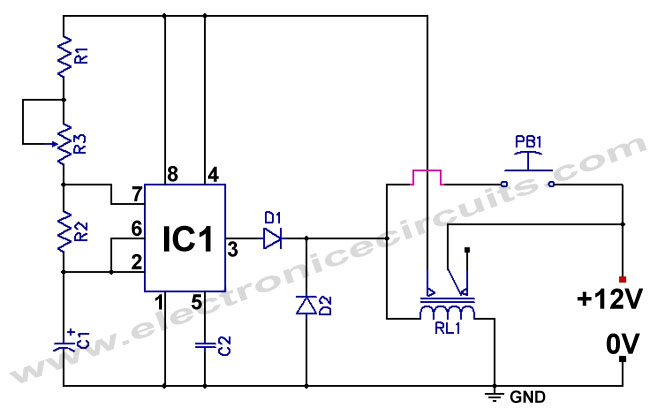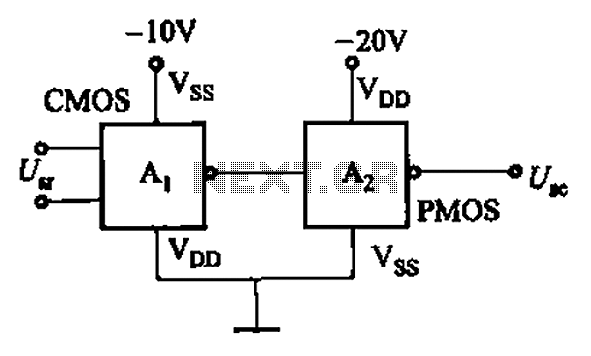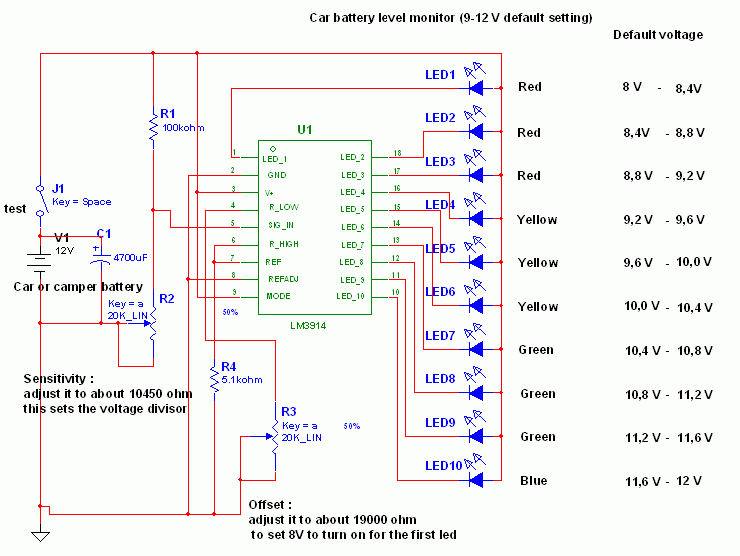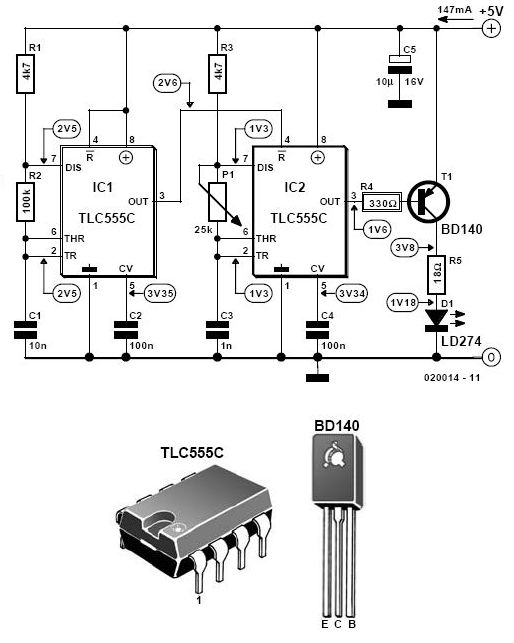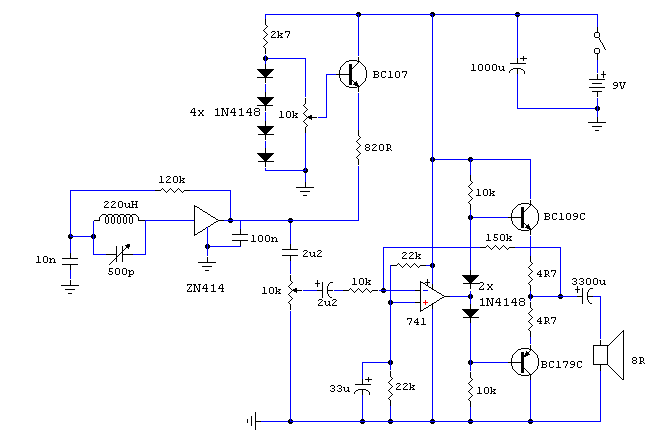
The Time Delay Circuit

The duration for which the circuit remains active is determined by the time required for the stored electrical current to leak back into the circuit, which keeps the transistor and the entire circuit energized. A resistor is present that limits the rate at which the capacitor can discharge. Increasing the value of this resistor will result in a longer discharge time for the capacitor, thereby prolonging the energization of the cold starting circuit. Conversely, decreasing the resistor value will allow the capacitor to discharge more rapidly, leading to a shorter operational period for the circuit.
The described circuit operates on the principle of energy storage and controlled discharge through a capacitor and resistor configuration. The capacitor serves as a temporary energy reservoir, storing electrical energy when the circuit is powered. The resistor is crucial in managing the discharge rate of the capacitor; its resistance value directly influences how quickly the stored energy is released back into the circuit.
In practical applications, this setup is commonly utilized in cold starting circuits, such as those found in automotive ignition systems or other applications requiring a brief surge of power. When the circuit is initially powered, the capacitor charges up to a certain voltage level. The transistor, acting as a switch, remains in the 'on' state as long as the voltage across the capacitor is above a certain threshold.
Adjusting the resistor value offers a straightforward method for tuning the circuit's performance. A higher resistance value increases the time constant of the RC (resistor-capacitor) circuit, effectively extending the time the transistor remains activated. This is particularly beneficial in applications where a longer duration of operation is necessary. On the other hand, a lower resistance value decreases the time constant, allowing for faster discharge and quicker deactivation of the circuit, which may be desirable in scenarios requiring rapid cycling or energy conservation.
In conclusion, the interplay between the resistor and capacitor is fundamental to the circuit's operation, with careful selection of component values enabling precise control over the timing characteristics of the circuit.The length of time the circuit stays on for depends on how long it takes for the stored electrical current to leak back into the circuit, keeping the transistor (and thus the entire circuit) energized. We have a resistor that is limiting the rate at which the capacitor can discharge. If we increase the value of that resistor, it will take the capa citor longer to discharge and so the cold starting circuit will stay energized for longer. Likewise, if we decrease the value of the resistor, the capacitor will discharge more quickly, and the circuit will operate for a shorter period of time. 🔗 External reference
The described circuit operates on the principle of energy storage and controlled discharge through a capacitor and resistor configuration. The capacitor serves as a temporary energy reservoir, storing electrical energy when the circuit is powered. The resistor is crucial in managing the discharge rate of the capacitor; its resistance value directly influences how quickly the stored energy is released back into the circuit.
In practical applications, this setup is commonly utilized in cold starting circuits, such as those found in automotive ignition systems or other applications requiring a brief surge of power. When the circuit is initially powered, the capacitor charges up to a certain voltage level. The transistor, acting as a switch, remains in the 'on' state as long as the voltage across the capacitor is above a certain threshold.
Adjusting the resistor value offers a straightforward method for tuning the circuit's performance. A higher resistance value increases the time constant of the RC (resistor-capacitor) circuit, effectively extending the time the transistor remains activated. This is particularly beneficial in applications where a longer duration of operation is necessary. On the other hand, a lower resistance value decreases the time constant, allowing for faster discharge and quicker deactivation of the circuit, which may be desirable in scenarios requiring rapid cycling or energy conservation.
In conclusion, the interplay between the resistor and capacitor is fundamental to the circuit's operation, with careful selection of component values enabling precise control over the timing characteristics of the circuit.The length of time the circuit stays on for depends on how long it takes for the stored electrical current to leak back into the circuit, keeping the transistor (and thus the entire circuit) energized. We have a resistor that is limiting the rate at which the capacitor can discharge. If we increase the value of that resistor, it will take the capa citor longer to discharge and so the cold starting circuit will stay energized for longer. Likewise, if we decrease the value of the resistor, the capacitor will discharge more quickly, and the circuit will operate for a shorter period of time. 🔗 External reference
